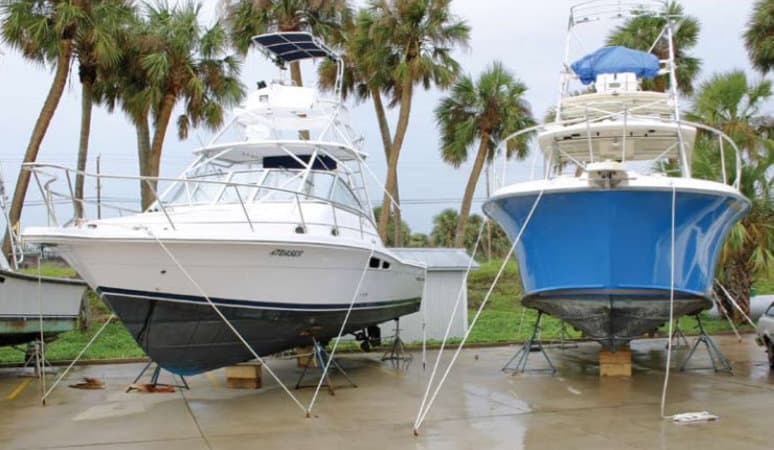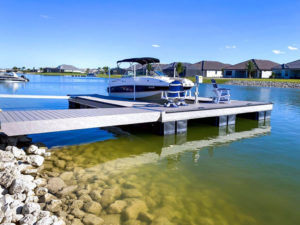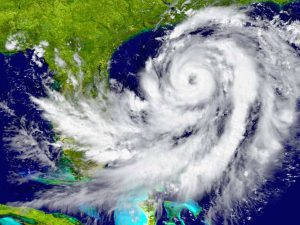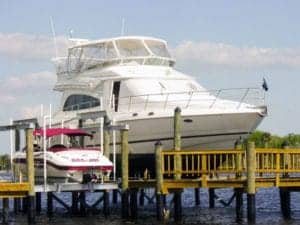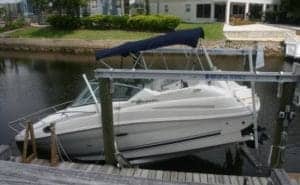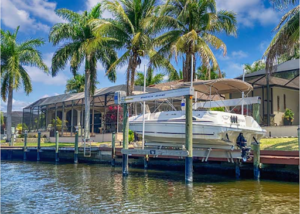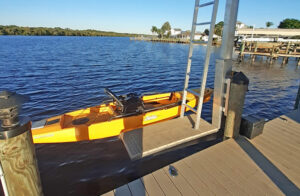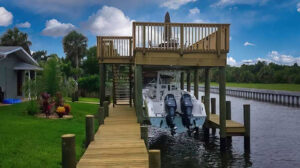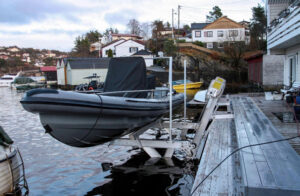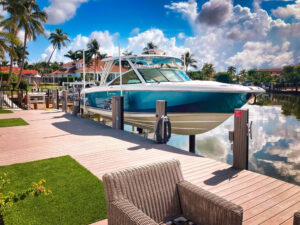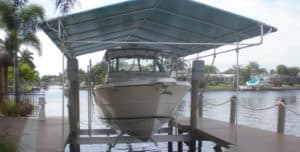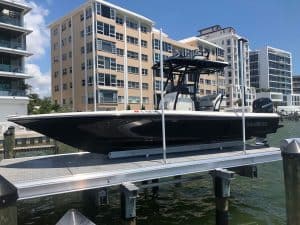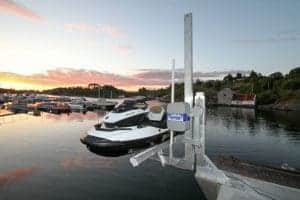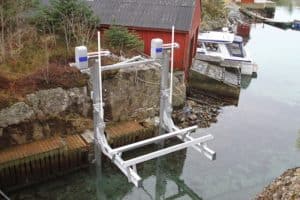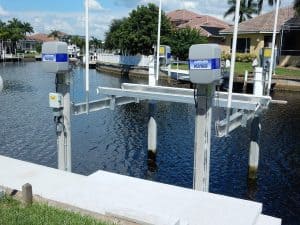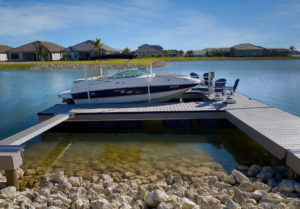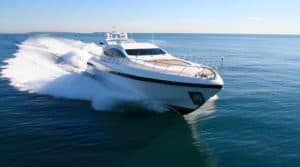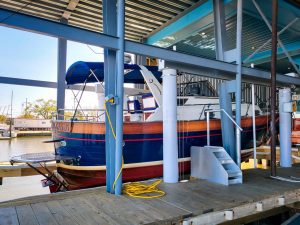Weather changes quickly, and boat lifts are subject to the wrath of hurricanes and tropical storms.
However, a well-engineered, custom boat lift can withstand much of nature’s fury.
IMM Quality Boat Lifts designs, engineers and manufactures custom boat lifts for all climates – tropical, subtropical, temperate and continental. Across the world, no matter the climate, people love to spend time on the water.
Boat owners should be aware of the impacts of hurricanes and tropical storms, as well as storm surge, on their boat lifts.
High Winds
Hurricanes and tropical storms pack powerful winds, storm surge flooding and torrential rains. These weather systems pose a trifecta of concerns for boat owners in coastal regions. Powerful winds damage structures of all types, even reinforced concrete block buildings. IMM Quality Boat Lifts recommends two safe options for boat storage during a storm: (1) Move a boat out of a storm’s projected path, or (2) Move the boat onto dry land, either in a secure, indoor storage facility or up on keel blocks with boat jacks and strapped to the ground using helical anchors. Although IMM Quality Boat Lifts builds its lifts with thick aluminum beams and stainless steel, a lift is only as strong as the supporting structure (the wood piles and dock). To minimize the risk for potential damage, we Do Not recommend keeping your boat on a lift. During a storm, waves can smash boats repeatedly against a dock or pilings. High winds will cause boats secured on a four-post cradle lift to swing violently from front to back, or side to side. Meanwhile, boats secured on elevator lifts often fare no better, with their carriages bouncing from the wind gusts. Ultimately, the boat lift may fail with snapped cables being the most common cause. If left with no option, many boat owners have prepared cradle lifts by completing the following steps:- With the boat in place, attach lines between cleats on the boat and dock.
- Raise the cradle beams to their maximum height so lines become taut. Lines that are too loose can allow boats to float away; lines that are too taut create pressure that can crush a boat.
- Boat owners with mechanical and electrical know-how can remove the boat lift’s motor and gear box, and store them in a dry place.
- To minimize the amount of cradle swing, strap each of the four corners of the lift cradle to the closest pile.
- To prevent the boat from dropping after lift cables snap, brace the cradle with aluminum I-beams beneath the cradle beams, and secure the I-beams to the piles.
- With the boat in place, attach lines between cleats on the boat and dock.
- Raise the elevator carriage to its maximum height so the lines become taut to prevent wind gusts from blowing the boat off the bunks.
- Secure box clamps around the I-beam tracks, just below the upper wheels of the carriage. This makes sure a boat cannot slide down to the water if the lift cables snap.
- As an alternative to box clamps, mechanically minded individuals can drill a hole through the I-beam track just below the upper wheels of the carriage. Bolt a 4 x 4 block of wood through this hole to prevent the carriage from sliding down to the water if the cables snap.
- Boat owners with mechanical and electrical know-how can remove the boat lift’s motor and gear box, and store them in a dry place.
- Place straps around the dock and elevator carriage to stop any potential swinging or bouncing.

